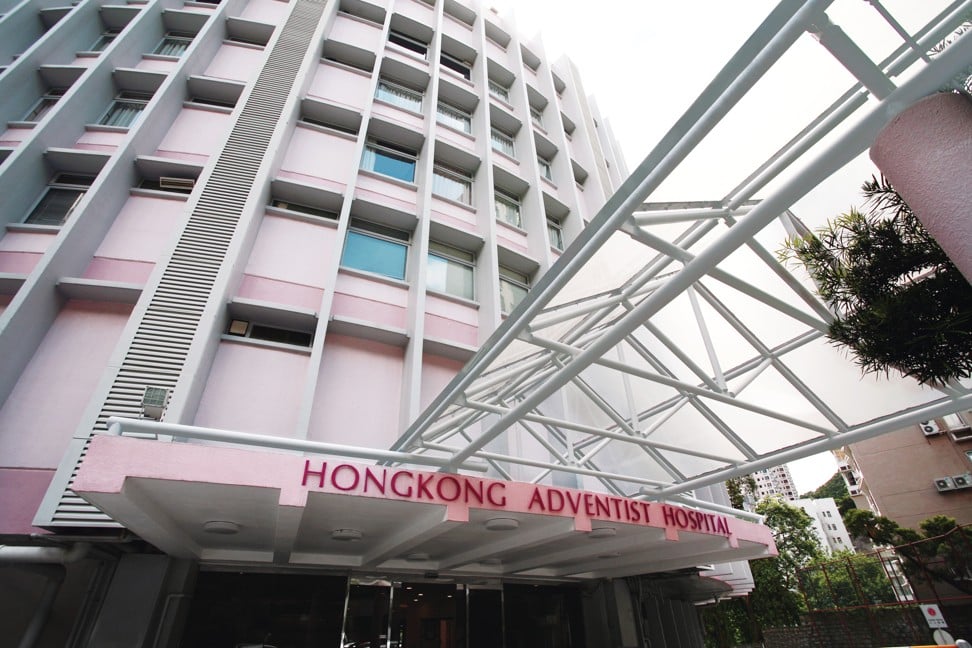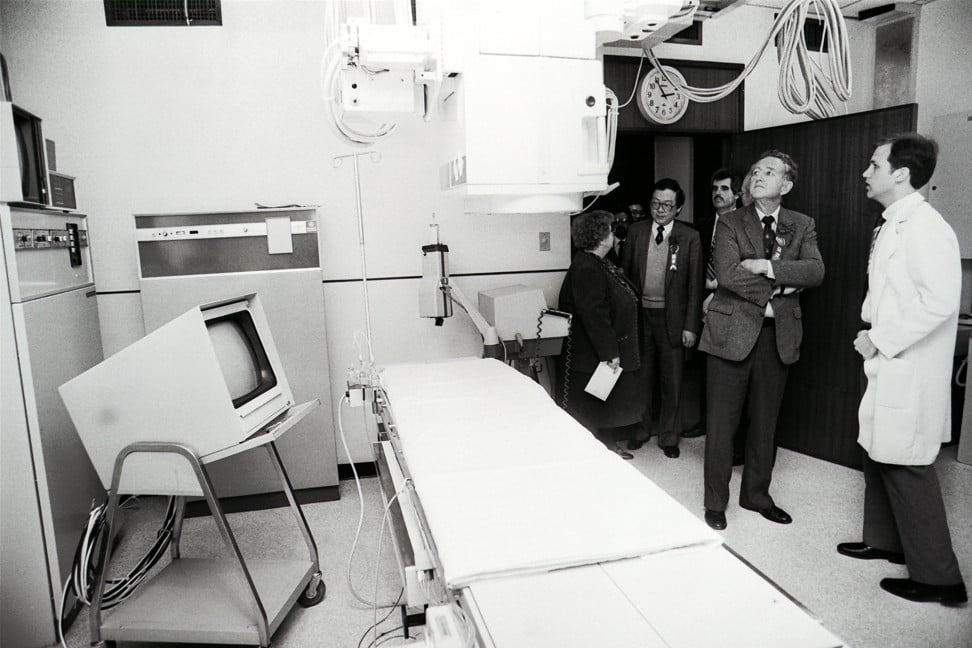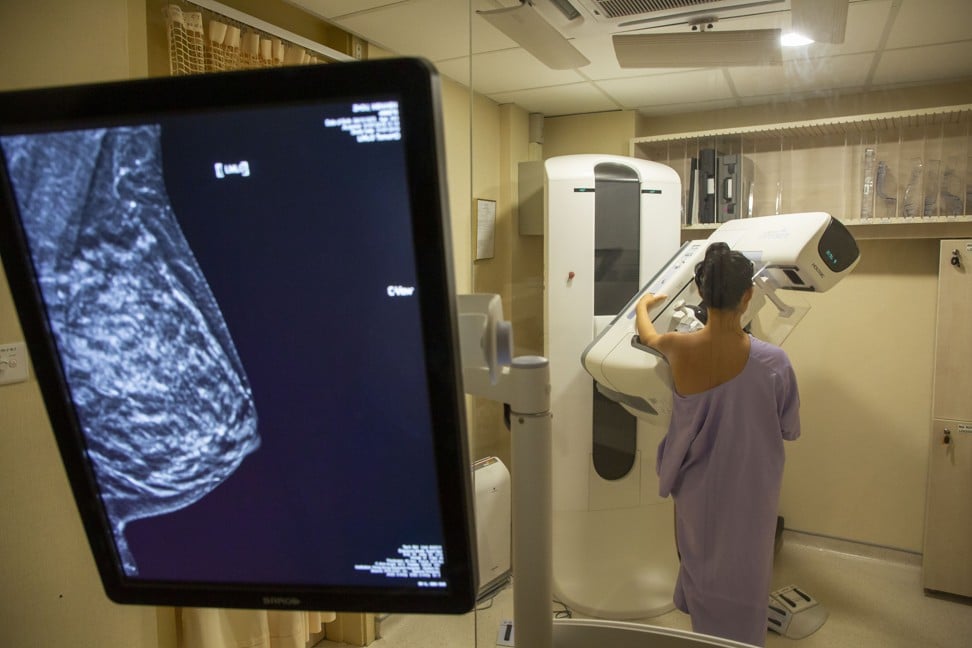State-of-the-art Hong Kong private hospital’s surgical specialists and staff earn global reputation over 50 years
- Hong Kong Adventist Hospital – Stubbs Road, which opened in 1971, includes Hong Kong Heart Center and oncology and minimally invasive surgery centres
- CEO Alex Lan proud of achievements and long service of workers, such as housekeeping manager Gloria Tong and head of oncology and diagnostic imaging Danny Leung
[Sponsored article]
Medical breakthroughs in recent decades have saved many lives, but it is the workers behind the health care in places such as hospitals and out-patient clinics that help a patient to heal. Yet in their hearts, the health staff really hope to see fewer patients walking in the door.
“Working in a hospital, we not only can help people get well, but we also can teach them how to take care of themselves, so that they do not need to come to the hospital,” says Alex Lan, president and CEO, Hong Kong Adventist Hospitals, which runs two private hospitals in city, one in Stubbs Road, Wan Chai, and the other in Tsuen Wan.
When Hong Kong Adventist Hospital – Stubbs Road opened in 1971, it was a much smaller and more modest facility. But over the years it has expanded and added important equipment, with milestones including the launch of its intensive care unit in 1980, the openings of the Hong Kong Heart Center in 1985, Oncology Center and Minimally Invasive Surgery Center in 2013 and Minimally Invasive Spine Surgery Center in 2014.

Today, the hospital is known for its state-of-the-art equipment such as the O-arm O2 imaging system – a mobile X-ray offering 2D and 3D images for surgery involving spinal, cranial and orthopaedic procedures – and also its team of surgical specialists.
In 2006, the hospital was awarded the Gold Seal of Approval when it became the first in Hong Kong to obtain accreditation from the Joint Commission International, a nonprofit organisation that surveys and sets standards for health care providers worldwide.
In 2019, management decided to pursue re-accreditation as a testament to the continuous improvement of its medical services over the years. During the stringent two-year process, the hospital, like the rest of the world, was hit hard by the Covid-19 pandemic, but the staff have not been deterred by it and last year it obtained re-accreditation and was again awarded the Gold Seal of Approval.
“That is something I’m very proud of,” Lan says, who has been leading the hospital group since 2016.
His pride in the hospital is something that is shared by his staff – which is evident in the length of service of some of them at the hospital.
Gloria Tong, the housekeeping manager, for example, has been working at Hong Kong Adventist Hospital – Stubbs Road for 42 years. “I used to work as a nurse, in charge of the central supply department,” she says.
“When the housekeeping manager was about to retire, my friend recommended that I apply for the position.

“My friend said the department would run better with someone from the nursing staff, particularly after the [severe-acute respiratory syndrome] Sars epidemic [a viral respiratory disease caused by a coronavirus, first identified in 2003, which claimed the lives of 299 Hong Kong people].
“Cross-infection is one of our biggest concerns. With a medical background, I can help the team understand precautions better.”

Tong manages a team of 30 staff, and is responsible for managing the rota in addition to making sure hygiene standards are consistently maintained.
She says she has received many strange requests during her decades at the hospital, including once being asked to cook for a patient.
“When I was a nurse, I was caring for a child waiting for a liver transplant,” she says. “He was in the hospital for a long time. One day, his mum brought over a fish and asked me if I could cook it for them.
“I was surprised to see her bringing in a fish, but the request was understandable. She was with the child every day in the hospital, eating porridge at every meal.
“I came up with an idea to make steamed fish in the microwave, as that was the only cooker in the nurses’ resting room. Unexpectedly, it ended up being a success and the mum gave me the thumbs-up!”

While Tong’s job involves being creative and thinking outside the box, the work of Danny Leung, director of Diagnostic Imaging Services & Oncology Center, prioritises precision. Among the many technologies he has to work with at the hospital is the linear accelerator, which uses radiation to kill cancer cells.
“Cancer treatment has come a long way,” he says. “In the past, we needed major surgery to treat cancers. Nowadays, we can do minimally invasive procedures.
“The machine can do what we call active breathing control, which means we can freeze the moment and then minimise the radiation dose to the patient while killing the cancer.”
During the procedure, the patient breathes through a snorkel, allowing the machine to control the air flow and holding patterns to minimise intraorgan motion. That helps the radiation beam to focus on the exact spot.
Leung joined the hospital as an X-ray technician in 1990 and since then has seen equipment growing increasingly advanced to allow accurate diagnoses.
“I think it‘s really, really amazing that we can use tools to find out what’s going on in the patient and then treat it,” he says. “The biggest misconception is ‘I have cancer, I’m going to die’, but actually, this is not the case anymore. Cancer is now treatable and, if we can diagnose it early enough, we can have a full recovery.”
The upgrading and expansion of Hong Kong Adventist Hospital – Stubbs Road is still going on. In May, it relocated the Rehabilitation Center from the main building’s seventh floor to the first floor, to offer physical, occupational and speech therapy, as well as orthotics services, and podiatry in a new environment.

In August, it became the city’s first hospital to operate using the Transcatheter Bicaval Valves System – which involves implanting two self-expanding biological valves to treat people with certain heart conditions. The patient, who is in his 70s, was suffering from tricuspid valve regurgitation, where the valve that carries blood between the two right heart chambers leaks because it does not close properly.
As he was deemed unsuitable for open-heart surgery, this new procedure was chosen because it allows the valves to be implanted without disturbing the tricuspid valve, making it much less invasive and risky.
“We are not a big hospital, with [only] 120 beds, but we have [the Hong Kong Heart Center, Orthopaedics & Traumatology Services, Minimally Invasive Spine Surgery Center and the Oncology Center],” Lan says. “And we will have the new redevelopment of the hospital coming in two or three years’ time.”
This project will see a lift tower built to make it more convenient for patients and visitors to access the hospital’s main entrance from the bus stops on Stubbs Road, which will hopefully encourage more people to use public transport.
The height of the medical tower will be raised 10 metres for optimisation and to create a new floor, and it will also take the building’s rooftop cooling system further away from nearby residences and minimise any disturbance to residents. The hospital hopes that by adding new advanced technologies, medical treatments will become more effective, operational efficiency will be further improved, and patients will be provided with better services.
Rebuilding work will also see the ground-floor area of the two buildings reduced to create more open space.
One can only imagine what another 50 years will bring to Hong Kong Adventist Hospital – Stubbs Road.


